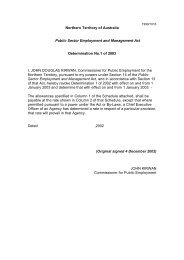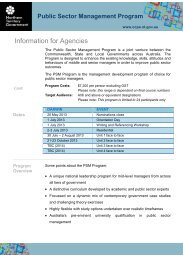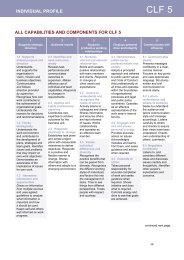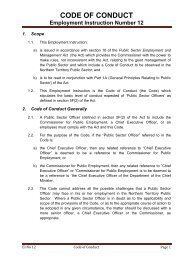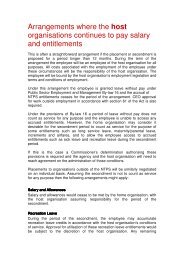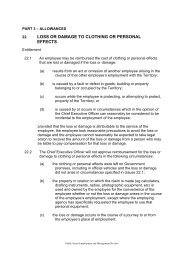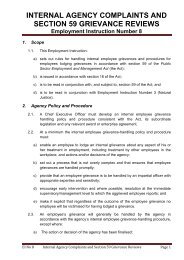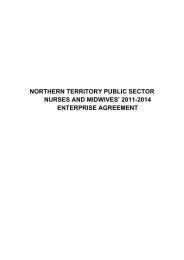Making Workforce Planning Work in the NT Public Sector
Making Workforce Planning Work in the NT Public Sector
Making Workforce Planning Work in the NT Public Sector
Create successful ePaper yourself
Turn your PDF publications into a flip-book with our unique Google optimized e-Paper software.
The languageof workforceplann<strong>in</strong>g<strong><strong>Work</strong>force</strong> plann<strong>in</strong>g – gett<strong>in</strong>g <strong>the</strong> numbers rightor as close as you can! Align<strong>in</strong>g <strong>the</strong> bus<strong>in</strong>ess needs withthose of <strong>the</strong> workforce.<strong><strong>Work</strong>force</strong> development – <strong>the</strong> strategies youapply to reta<strong>in</strong> and attract <strong>the</strong> workforce you need todeliver your services.Tips:• <strong><strong>Work</strong>force</strong> mobility trendsare key <strong>in</strong>formants toworkforce plann<strong>in</strong>g• Don’t get distracted by lotsof data - workforce plann<strong>in</strong>grequires only core dataabout <strong>the</strong> current and futureworkforce requirements• Regard your workforceas a whole - <strong>the</strong> workercharacteristics, such asage and o<strong>the</strong>r diversityare more relevant to <strong>the</strong>workforce developmentstrategies than <strong>the</strong>workforce plann<strong>in</strong>g.<strong><strong>Work</strong>force</strong> cohorts – agency<strong><strong>Work</strong>force</strong> characteristics, such as age, gender, cultural background and o<strong>the</strong>ridentifiers, are important but not critical <strong>in</strong> workforce plann<strong>in</strong>g. They are moredirectly relevant to workforce development strategies.It is best if <strong>the</strong> workforce is def<strong>in</strong>ed through its cohorts as <strong>the</strong>se are morereliable <strong>in</strong>formation sources for monitor<strong>in</strong>g retention and recruitment trends.The workforce plann<strong>in</strong>g cohorts are generally identified as follows:• new entry: < 2 years work<strong>in</strong>g <strong>in</strong> <strong>the</strong> agency• early career: >2 and 5 and < 10 years work<strong>in</strong>g <strong>in</strong> <strong>the</strong> agency• mid career 2: >10 and 15 and



